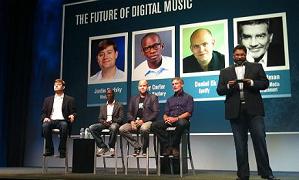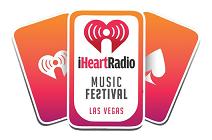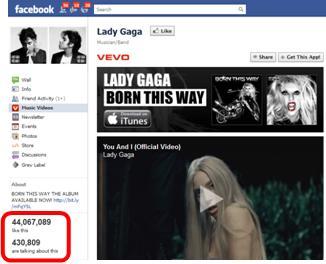 This morning’s post is from a new voice, researcher/consultant/broadcaster Mike Anthony. He is a regular reader of this blog, and often provides comments that may as well be posts. Today, he gets his shot at Page 1 and an entry that I think you’ll like.
This morning’s post is from a new voice, researcher/consultant/broadcaster Mike Anthony. He is a regular reader of this blog, and often provides comments that may as well be posts. Today, he gets his shot at Page 1 and an entry that I think you’ll like.
As always, your comments are welcome and necessary in keeping the conversation moving. Please do as Mike has done – give us your best 2¢ on the topic of the day. We appreciate and respond to all comments. Now here’s Mike’s “take” on the changing landscape.
 Strategic planning meetings in radio like most industries have used “The 80/20 Rule” as a path for creating strategies that focus on the 20% heaviest users. In the case of radio, it was usually to own at-work listening or appeal to contest players in order to win the ratings game. I have directed more than my fair share of these meetings. But after continuing to study successful Internet businesses and what startups are focused on IMHO, there is a new 20% that broadcasters need to pay attention to.
Strategic planning meetings in radio like most industries have used “The 80/20 Rule” as a path for creating strategies that focus on the 20% heaviest users. In the case of radio, it was usually to own at-work listening or appeal to contest players in order to win the ratings game. I have directed more than my fair share of these meetings. But after continuing to study successful Internet businesses and what startups are focused on IMHO, there is a new 20% that broadcasters need to pay attention to.
Actives!
In the Internet world the key to success, to profitability is “the active user”… the ones who react to your product or service offer and spend. Even though the big Internet sites may have huge user databases, they are most concerned with the very active users inside that database. Time and money are spent studying their behaviors and actions. They assign values to these customers. It’s different than cume vs. core. In this case, a much higher value and attention is placed on actives than passives. The more they learn about actives, the more they can focus on content that causes commerce. Frequency of “ka-ching” is the only measurement metric that’s hard proof of ROI.
In the digital world, the question is – what is relevant that I can share with the customer right now that is local, timely and actionable, (actionable means it causes commerce)? For broadcasters, the challenge is to identify who the active listeners are and obsess over them. Fred Jacobs identified this “New 20” as I call them in Techsurvey 7 – “those who want relationships with stations, are active in social media, and love to share.” Fred agrees that these consumers can tip the scale in the right direction.
For more perspective, all broadcasters should watch the “Music’s Digital Future” panel at F8, Facebook’s developers’ conference from a few weeks ago.
 Since most of your listeners are on Facebook, knowing what they are planning next would seem to be prudent. On this panel was Lady Gaga’s manager, Troy Carter, one of the creators of Spotify, Justin Osofsky, and Bob Pittman from Clear Channel, each talking about the future of business from their POV. Watch the entire panel but specifically at the 17:56 point, listen as Lady Gaga’s manager talks about where they are focused. With 13 million followers on Twitter and 43 million fans on Facebook, Troy said, “Lady Gaga is so big the challenge now is how do we laser focus on the community and make it less passive?” The answer: They are going to laser focus on the super fan (the most active) as opposed to the passive person who may like only one single.
Since most of your listeners are on Facebook, knowing what they are planning next would seem to be prudent. On this panel was Lady Gaga’s manager, Troy Carter, one of the creators of Spotify, Justin Osofsky, and Bob Pittman from Clear Channel, each talking about the future of business from their POV. Watch the entire panel but specifically at the 17:56 point, listen as Lady Gaga’s manager talks about where they are focused. With 13 million followers on Twitter and 43 million fans on Facebook, Troy said, “Lady Gaga is so big the challenge now is how do we laser focus on the community and make it less passive?” The answer: They are going to laser focus on the super fan (the most active) as opposed to the passive person who may like only one single.
Troy made another critical distinction about communicating with the community when he said, “It’s not about Gaga talking to the community, it’s about the community talking to each other, sharing information about Gaga and the things she does.” They understand it’s about the bond with the super fan that creates the brand within the entire community.
Justin indicated that Spotify believes the roadmap to their success is all around the personal playlist and the ability to instantly share it with friends. The magic is that activity between people.
 Bob Pittman is the only broadcaster talking about going beyond the towers and transmitters by using the scale of the CC network of stations to create events and products the listeners can interact with and be part of on their own terms. It started with iHeartRadio that extended into the iHeartRadio Music Festival in Las Vegas.
Bob Pittman is the only broadcaster talking about going beyond the towers and transmitters by using the scale of the CC network of stations to create events and products the listeners can interact with and be part of on their own terms. It started with iHeartRadio that extended into the iHeartRadio Music Festival in Las Vegas.
What is not being talked about is how Pittman is ahead of the curve in what I think is the key to broadcasting’s future… partnerships. Pittman bagged the elephant of partnerships right out of the box teaming with Facebook for the iHeartRadio show. He has also extended the iHeartRadio relationship with Microsoft and Xbox. Another elephant. Radio doesn’t have to create digital products or services; it needs to partner with digital businesses already created but that’s for another discussion.
Facebook is focused on looking for more ways to increase engagement with its active users, involving the Mt. Rushmore of social activities like music, movies, games, photos and books. They’ve even created a “time-line” so you can have an active history of personal events.
Even Seth Godin has decided he is not focusing on reaching strangers (anyone who has never read his work). So instead of finding readers for his writing, he’s now writing for his readers (actives). According to Seth, if you need the masses to succeed, you will feel pain and it’s going to get harder!
Broadcasting, at the other end of the spectrum, seems to be more passive and less active with its audience since the incorporation of PPM, as the standard for audience measurement. Radio is spending an unbalanced amount of its time and resources trying to affect a totally passive measurement tool in PPM. We are now seeing more passive programming, using less talent in all phases of broadcasting, and engaging the audience less frequently. It’s not Arbitron’s fault that broadcasters misinterpret the use of the data and put so much on the line in order to get a great score in PPM.
PPM in the most simplistic terms counts (records) how many radios are on in the presence of a meter, turned on to what stations and for how long. That’s it. PPM is about passive exposure to a signal and does not identify the “activity” of the listener. In April, Amber Nashlund wrote a great piece on why “counting isn’t measuring.”
PPM provides no information that helps you identify or engage the active listener. If you obsess over the active listener and serve them – ratings will happen. For proof, look at some of the big PPM success stories – they are stations like KISW, WMMR, WDVE, and other stations that are all about being “active,” rather than “passive.”
 In the meantime, Internet businesses and startups are growing by being laser focused on solving real problems for active users and engaging those who spend the most time, and then money on their sites. Broadcasting’s revenue pie, on the other hand, continues to decline year after year and owners would do well to consider that there might be a new and more profitable 20% to serve.
In the meantime, Internet businesses and startups are growing by being laser focused on solving real problems for active users and engaging those who spend the most time, and then money on their sites. Broadcasting’s revenue pie, on the other hand, continues to decline year after year and owners would do well to consider that there might be a new and more profitable 20% to serve.
Study the focus of people who have already scaled their businesses. Watch and read what Seth Godin does, what Lady Gaga is doing on Facebook, how Spotify is building its user base and connecting listeners, the partnerships that CC is creating outside of broadcasting, and the new layers of engagement Facebook is adding to its platform (which they plan on turning into ancillary businesses and revenue streams). The most successful people in these business categories are providing the roadmap.
Why are broadcasters so set in their ways and unwilling to follow? For radio there is a steep learning curve in order to remain relevant. The good news is the active customer will tell us what we need to know to succeed. We just have to ask them.
In the words of Gordon Gekko from the movie Wall Street…
”Bud Fox, this is your wake up call.”
- A 2020 Lesson?It Could All Be Gone In A Flash - April 24, 2025
- How AI Can Give Radio Personalities More…PERSONALITY - April 23, 2025
- Can Radio Afford To Miss The Short Videos Boat? - April 22, 2025




I have been preaching this for the past 2 years. It’s not about who’s got the larger number of fans! Its about getting them to act. We dont have the largest number of fans in the market, but our fans are TWICE as interactive as the next station and 5x as interactive as the station with the most fans. And Gues what? THE ADVERTISERS PAY ATTENTION! Showing them our success with “the new 20” has enabled us to be included on national buys that we hadn’t been on in years… Great Post, Mike!
Great comment, Dave. Thanks for chiming in a bringing in the sales side of the equation. Appreciate it.
Correct you are, Dave. We need to change our metrics and it’s great that advertisers are getting that message. Thanks for offering up your opinion and for reading our blog.
Wow! Bravo!
All businesses need new bodies to replace the attrition but your most valuable audience is the one that is already using you. Especially now with the convergence of all media. It’s database management 101. Divide and conquer.
Radio still thinks it’s about casting a big net vs. mining the niches. As you said, “Why are broadcasters so set in their ways”? The special sauce is in the rabid users.
Thanks for the post. Good stuff.
It is a sales maxim that it is easier to make current customers happy than atract new ones. Thanks for reading our blog & contributing.
Nathan, you are correct. It is always easy to work with the people who got you to the dance than attracting newe ones. Go after the “actives.” Thanks for contributing.
Appreciate the comment, Nathan. It is always easier to please current customers than create new ones. Thanks for participating.